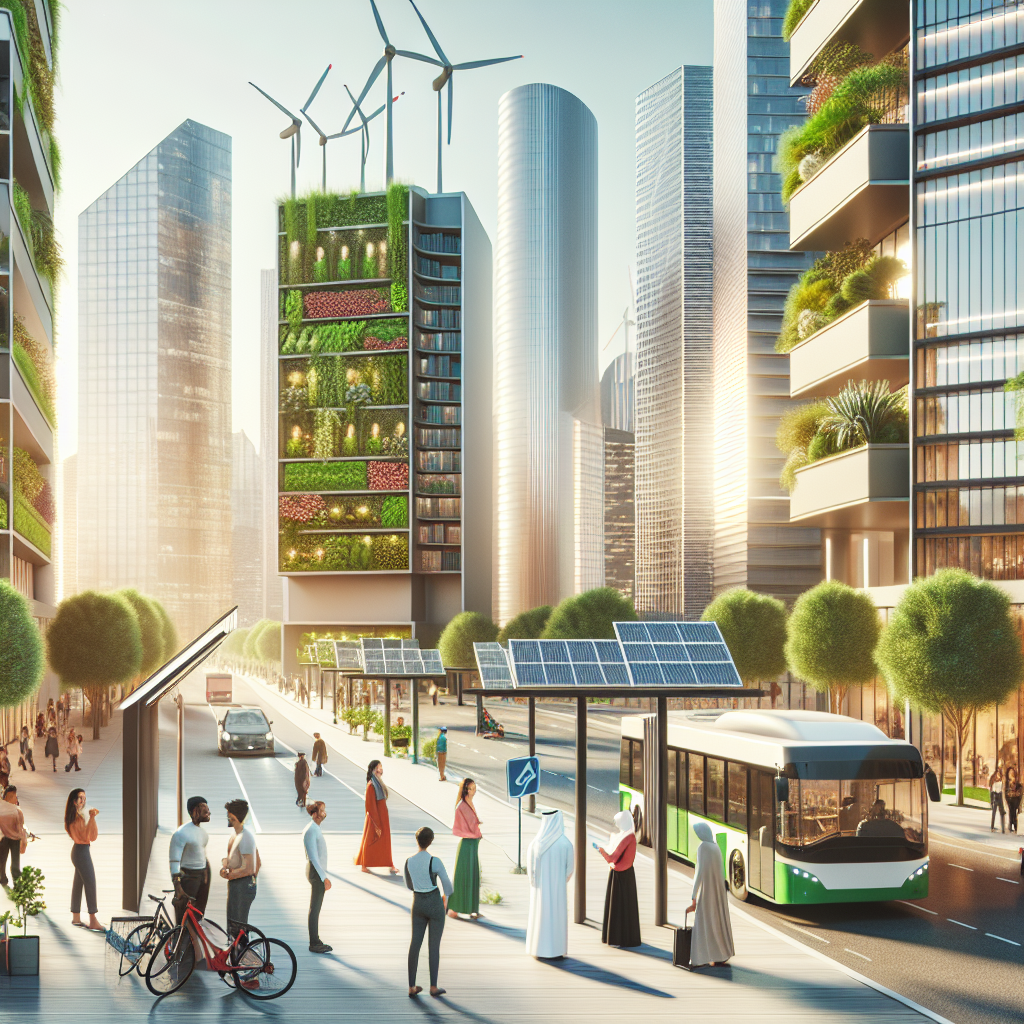Green Urbanism: How Sustainable Construction Shapes Our Cities
In the 21st century, the concept of green urbanism has emerged as a critical approach to city planning and development. As the world grapples with the challenges of climate change, resource depletion, and environmental degradation, sustainable construction practices offer a beacon of hope. These practices aim to reduce the environmental impact of urban development while creating livable, resilient, and vibrant cities. This article delves into how sustainable construction is shaping our cities, transforming them into models of green urbanism, and answers some frequently asked questions on the subject.
The Essence of Green Urbanism
Green urbanism is an integrative approach to urban planning that focuses on creating sustainable, regenerative urban environments. It emphasizes the importance of reducing carbon footprints, enhancing biodiversity, and ensuring that cities are resilient to the impacts of climate change. Sustainable construction plays a pivotal role in this vision, incorporating eco-friendly materials, energy-efficient design, and green infrastructure to minimize environmental impact.
The Role of Sustainable Construction in Shaping Cities
Sustainable construction is not just about the materials used in buildings; it’s a holistic approach that considers the entire lifecycle of a structure, from design to demolition. Here are several key ways in which sustainable construction is shaping our cities:
1. Energy Efficiency and Renewable Energy
Modern green buildings are designed with energy efficiency at their core, utilizing technologies such as solar panels, green roofs, and smart energy management systems. These innovations not only reduce the carbon footprint of buildings but also lead to significant cost savings over time.
2. Water Conservation
Sustainable construction practices include the implementation of rainwater harvesting systems, efficient wastewater treatment, and water-saving fixtures. These measures ensure that cities can manage their water resources more effectively, an essential aspect of urban sustainability in the face of growing water scarcity.
3. Waste Reduction
By focusing on materials that are recyclable, reusable, or sourced from sustainable processes, sustainable construction minimizes waste. Additionally, the adoption of modular construction techniques can significantly reduce the amount of waste generated during the building process.
4. Enhancing Urban Biodiversity
Green urbanism promotes the integration of natural elements into urban design. Sustainable construction contributes to this by incorporating features such as living walls, green roofs, and urban gardens. These elements not only beautify the city but also support urban wildlife and improve air quality.
5. Promoting Healthy Living Environments
Sustainable buildings are designed with the well-being of their occupants in mind. Natural lighting, indoor air quality, and the use of non-toxic materials are all aspects that contribute to healthier living environments. This, in turn, has positive effects on the residents’ mental and physical health.
The Impact of Sustainable Construction
The implications of sustainable construction extend beyond environmental benefits. Economically, it can lead to job creation in the green technology and construction sectors. Socially, it fosters a sense of community through the development of shared spaces and amenities. Politically, it sets a precedent for responsible governance and sustainable policies.
Challenges and Opportunities
Despite its benefits, the transition to sustainable construction faces several challenges. High initial costs, lack of awareness, and regulatory hurdles are significant barriers. However, these challenges also present opportunities for innovation, education, and policy reform that can accelerate the adoption of green urbanism principles.
The Future of Urban Development
As cities continue to grow, the principles of green urbanism and sustainable construction will become increasingly important. Future urban development will likely focus on creating smart cities that leverage technology to achieve sustainability goals, resilience against climate change, and improved quality of life for their inhabitants.
FAQs
Q: What is sustainable construction?
A: Sustainable construction refers to the practice of creating buildings and infrastructure in ways that minimize their environmental impact. This involves the use of eco-friendly materials, energy-efficient design, and the consideration of a building’s lifecycle.
Q: How does sustainable construction contribute to green urbanism?
A: Sustainable construction is a cornerstone of green urbanism, as it reduces carbon emissions, conserves resources, and enhances the quality of urban environments. It supports the broader goals of creating sustainable, resilient, and livable cities.
Q: Can sustainable buildings really save money?
A: Yes, while sustainable buildings may have higher initial costs, they typically lead to significant savings over time through reduced energy and water consumption, lower maintenance costs, and increased property values.
Q: Are there examples of cities that have successfully adopted green urbanism?
A: Yes, cities such as Copenhagen, Singapore, and Vancouver are often cited as leading examples of green urbanism. These cities have implemented comprehensive sustainability strategies that include sustainable construction practices.
Q: How can individuals contribute to sustainable construction and green urbanism?
A: Individuals can contribute by advocating for sustainable practices in their communities, supporting green building initiatives, and considering sustainability in their own homes, whether through energy-efficient appliances, water-saving fixtures, or the use of renewable energy sources.
In conclusion, sustainable construction is not just an environmentally responsible choice; it’s a foundational element of green urbanism and the future of urban development. As cities evolve, the principles of sustainability embedded in construction practices will play a critical role in shaping vibrant, resilient, and sustainable urban environments for generations to come.

